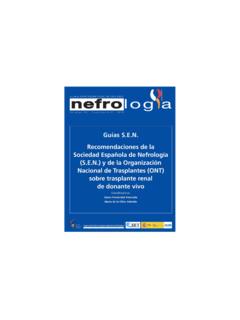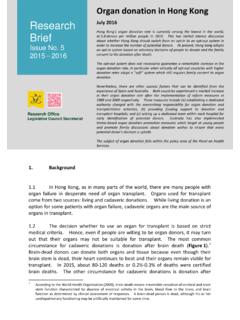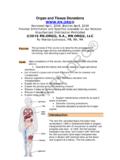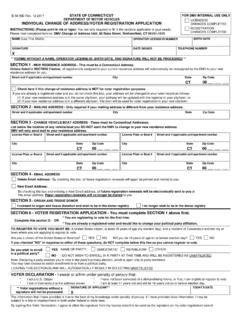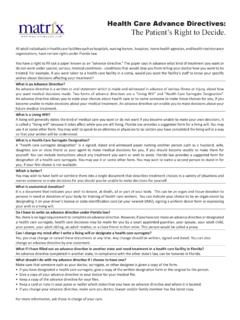Transcription of Guide of recommendations for Quality Assurance …
1 Guide of recommendations for Quality Assurance Programmes in the Deceased donation ProcessDeveloped by:Dopki projectFunded by the European CommisionCOORDINATED BYColl, Elisabeth (Organizaci n Nacional de Trasplantes, Spain)Czerwinski, Jarostaw (Poltransplant, Poland) De la Rosa, Gloria (Organizaci n Nacional de Trasplantes, Spain)Dom nguez-Gil, Beatriz (Organizaci n Nacional de Trasplantes, Spain)LIST OF AUTHORSAmil, Margarida (Autoridade para os Servi os de Sangue e Transplanta o, Portugal)Brezovsky, Pavel (Transplant Coordinating Center of Czech Republic, Czech Repoublic)Czerwinski, Jarostaw (Poltransplant, Poland)
2 Coll, Elisabeth (Organizaci n Nacional de Trasplantes, Spain)Collett, Dave (NHS Blood and Transplant, United Kingdom)De Guerra, Arnaud (Agence de la Biom decine, France)De la Rosa, Gloria (Organizaci n Nacional de Trasplantes, Spain)Di Ciaccio, Paola (Centro Nazionale Trapianti, Italy)Dom nguez-Gil, Beatriz (Organizaci n Nacional de Trasplantes, Spain)Fryda, Premysl (Transplant Coordinating Center of Czech Republic, Czech Republic)Hamilton, Claire (NHS Blood and Transplant, United Kingdom)Kolar, Tadeja (Slovenija-Transplant, Slovenia)Lamy, Francois-Xavier (Agence de la Biom decine, France)Mart n, Silvia (Organizaci n Nacional de Trasplantes, Spain)M rton, J nos (Hungarian National Blood Transfusion Service, Hungary)Mih ly, S ndor (Hungarian National Blood Transfusion Service, Hungary)Norba, Daniela (Deutsche Stiftung Organtransplantation, Germany)Procaccio, Francesco (Azienda Ospedaliera Verona, Italy)Rizzato, Lucia (Centro Nazionale Trapiant, Italy)
3 Smits, Jacqueline (Eurotransplant International Foundation, The Netherlands)Thuong, Marie (Agence de la Biom decine, France)Wesslau, Claus (Deutsche Stiftung Organtransplantation, Germany)Zimmermann, Christine (Swisstransplant, Switzerland) Guide of recommendations for Quality Assurance Programmes in the Deceased donation ProcessSPECIAL THANKS TOMatesanz, Rafael (National Transplant Coordinator. Organizaci n Nacional de Trasplantes, Spain and leader of DOPKI Project)Aguiar, Maria Jo o (Autoridade para os Servi os de Sangue e Transplanta o, Portugal)Avsec, Danica (Slovenija-Transplant, Slovenia)Kirste, G enter (Deutsche Stiftung Organtransplantation, Germany)Loty, Bernard (Agence de la Biom decine, France)Marti, Hans-Peter (Swisstransplant, Switzerland)Nanni Costa, Alessandro (Centro Nazionale Trapianti, Italy)Oosterlee, Arie (Eurotransplant International Foundation, The Netherlands)
4 Walaszewski, Janusz (Poltransplant, Poland)Acknowledgements: The consortium wishes to thank the European Commission for its continu-ous support for advances in the field of organ donation and transplantation. Promotion of coop-eration between member states through projects as DOPKI is not only essential to that progress but also to construct a European network of Transplant Organizations that greatly facilitates an exchange of information and mutual learning. The DOPKI consortium also wishes to thank the 30 hospitals throughout Europe that have vol-untarily cooperated in the project through their participation in the pilot experience targeted to validate a pre-agreed on methodology to estimate donation potential and evaluate performance in the deceased donation process.
5 7 TABLE OF CONTENTS1. Preface .. 92. Introduction: the need for Quality Assurance Programmes in the Deceased donation Process .. 123. Definition and Objectives of a Quality Assurance programme in the Deceased 3. donation Process .. 164. State of the art of Quality Assurance Programmes in the Deceased donation Process 4. in DOPKI countries .. 174. General information on the Programmes .. 194. Hospital and Intensive Care Units Characteristics and Activity: Collected information .. 224. Starting point and potential of donation : Collected information and constructed 4.
6 Indicators .. 234. Areas for improvement in the Deceased donation Process: Collected information4. and constructed indicators .. 294. Global effectiveness of the Deceased donation Process: Collected information 4. and constructed indicators .. 294. Main results of running Quality Assurance Programmes in the Deceased 4. donation Process .. 334. Overall comparison between running Quality Assurance Programmes .. 385. General recommendations to build up a Quality Assurance programme in the Deceased 5. donation Process.
7 456. Methodology applied in the DOPKI pilot experience .. 496. Collected variables and definitions .. 506. Indicators constructed .. 546. Influencing factors .. 587. Final Considerations .. 60 Annex 1: Death forms of running Quality Assurance Programmes in the Deceased donation 7. Annex Process in DOPKI countries .. 61 Annex 2: Hospital form .. 74 Annex 3: Death form .. 758. References .. 78 Table of contents91. Preface1. PREFACEDOPKI (Improving the Knowledge and Practices in Organ donation ) was a project funded by the European Commission under the 6th Framework Program.
8 Its main objective was to improve knowledge and to develop an applicable methodology that could deter-mine both the potential for organ donation and its outcome and to define the limits of the organ safety and Quality . The knowledge obtained will be used to develop applicable actions to improve organ donation rates. The specific objectives of this project were the following: To develop specific indexes that could benchmark both the potential for organ do-nation and the factors that might have some impact on it. To share information on organ donation potential and the different social or health care factors affecting the final results.
9 To define what could be the target of excel-lence in the organ donation process performance. To define the risk levels in the donor evaluation process and the levels of accept-ance of organs for transplantation. To share information about outcome of the grafts from expanded donors or donors with rare conditions. To define the safety limits of the expanded donors and donors with infrequent conditions. To establish a link with the World Health Organization (WHO) to collect information on organ donation and transplantation activities worldwide and to disseminate the knowledge produced within the European Task Force to other WHO regions.
10 To define specific actions to be undertaken in order to improve the organ donation rates and hence organ transplantation activity. To elaborate specific recommendations to be transmitted from the consortium to policy makers for the development of health care actions and possible measures at the level of the European Union in this project, led by the Spanish National Organization of Transplantation (Organiza-ci n Nacional de Trasplantes), was developed by a consortium composed of 12 organiza-tions (Figure 1). The project partners are listed below.

